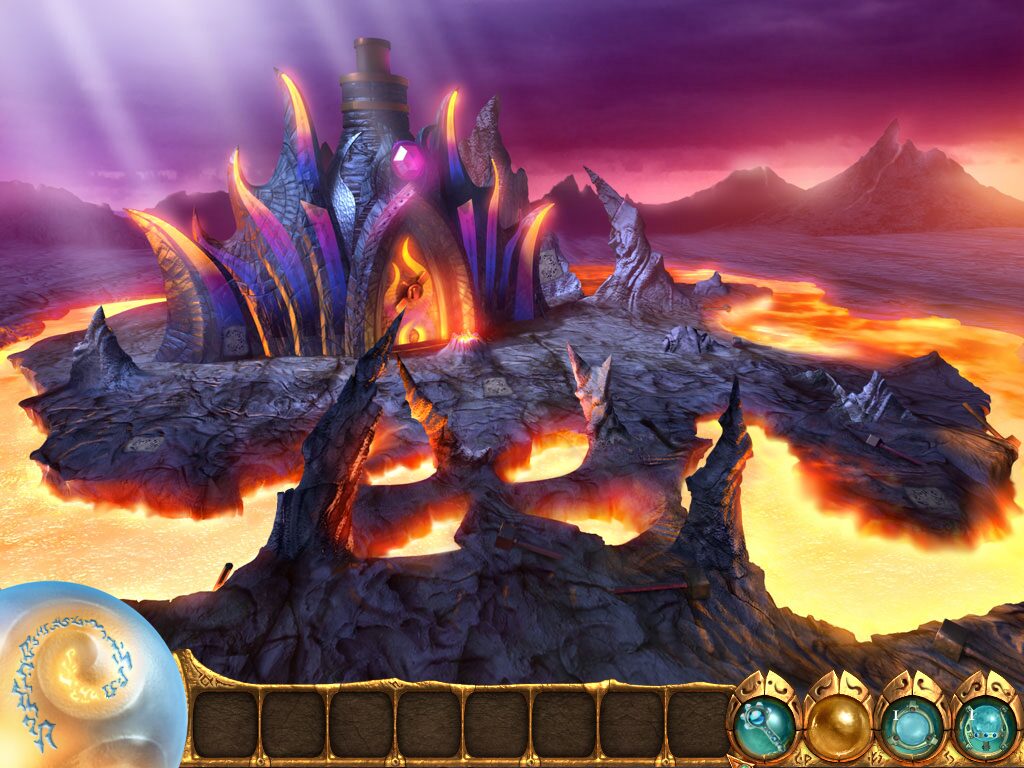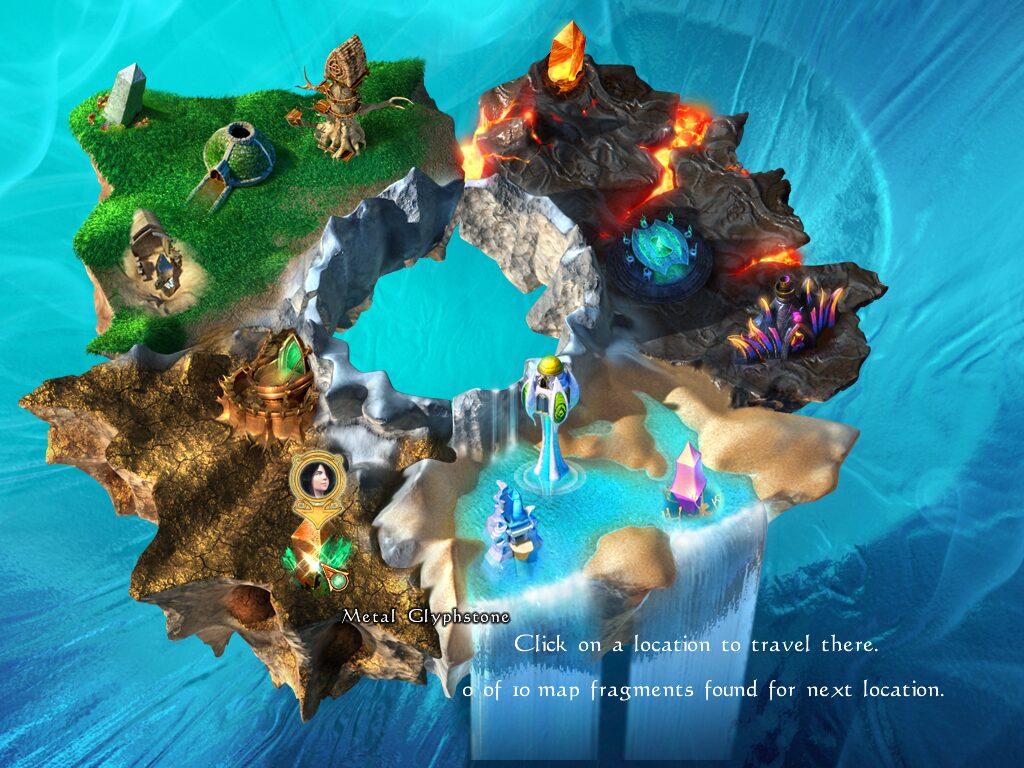Retro Replay Review
Gameplay
Kuros offers a classic first-person adventure setup reminiscent of Myst, with static screens that invite players to explore each location at their own pace. Navigation is straightforward: the cursor changes to an arrow near exits, and an overhead map lets you quickly jump between discovered areas. This design eliminates tedious backtracking, allowing focus on puzzle solving rather than endless walking.
(HEY YOU!! We hope you enjoy! We try not to run ads. So basically, this is a very expensive hobby running this site. Please consider joining us for updates, forums, and more. Network w/ us to make some cash or friends while retro gaming, and you can win some free retro games for posting. Okay, carry on 👍)
The core loop revolves around collecting scattered map pieces and assembling them as jigsaw puzzles on the map screen. Along the way, you’ll gather objects into four visible inventory slots framed by a rune-carved orb. Inventory puzzles require dragging and dropping items directly onto the environment, while mini-games—like spot-the-difference challenges and Pipe Dream clones—overlay the scene for more variety.
Hint lenses and wands add another layer of interaction. Lenses, when found, highlight a random item’s location or let you skip one mini-game, easing the experience for casual players. Using the wand cursor to draw runes in the air for select tasks introduces a tactile, magical touch. Overall, the pace is relaxed and puzzle difficulty sits on the easier end, making Kuros accessible to newcomers and laid-back adventurers.
Graphics
Visually, Kuros relies on high-resolution, pre-rendered backgrounds that capture the enchanted landscapes of its magical realm. Each screen is richly detailed, from vine-choked ruins to luminescent glyphstones, and the color palette shifts subtly to reflect different regions. Although static, these images create a strong sense of place and encourage careful observation.
The user interface integrates seamlessly: the rune spiral orb at the bottom of the screen glows progressively as you restore glyphstones, offering both a progress tracker and a decorative motif. Inventory slots and hint lens icons are clean and unobtrusive, ensuring puzzles remain front and center. Cursor changes and animations—like subtle lighting effects when activating objects—enhance feedback without overwhelming the eye.
While Kuros doesn’t offer real-time 3D or dynamic lighting, its art direction compensates with painterly textures and thoughtful composition. Transitions between screens are snappy, and the overhead map’s clean design complements the in-game visuals. For a casual adventure, the graphics feel polished and purposeful, striking a balance between beauty and performance.
Story
The narrative of Kuros casts you as Katya, an apprentice sorceress tasked with restoring balance to a fractured magical land. This setup provides clear motivation for exploration: each restored glyphstone brings you one step closer to healing Kuros. The plot unfolds gradually, with environmental clues and scant text entries filling in backstory.
Despite minimal voice acting or cinematic cutscenes, the world-building shines through the glyphstone puzzles themselves. Solving runic sequences and collecting map fragments echoes Katya’s growth in mastery, reinforcing the theme of restoration. Occasional notes and inscriptions hint at past civilizations, adding layers of intrigue without bogging down the gameplay.
Story pacing aligns with the puzzle-driven design: every new region unlocked by a completed glyphstone expands both the map and the lore. While the characters remain largely off-screen and the dialogue is sparse, the sense of mystery and discovery maintains engagement. For casual players seeking low-pressure tales, Kuros delivers a gentle yet satisfying narrative arc.
Overall Experience
Kuros excels as a casual first-person adventure, blending accessible puzzles with an enchanting setting. The balance of inventory challenges, mini-games, and rune-drawing sequences keeps gameplay fresh, while the hint lens system ensures frustration stays at bay. The static screen format and overhead map make navigation simple and reward careful observation.
The game’s visual style and UI design coalesce into a cohesive whole. Although it forgoes real-time 3D or voiceovers, the richly detailed backdrops and thoughtful iconography create an inviting atmosphere. Coupled with a straightforward story of magical restoration, Kuros feels like a well-crafted diversion for players who prefer exploration over action.
While seasoned adventure veterans may crave deeper puzzles or a more cinematic narrative, casual gamers and newcomers will appreciate Kuros’s gentle learning curve and soothing presentation. It’s a polished package that respects your time, offering a handful of hours of light-hearted mystery and runic charm. Overall, Kuros stands as a solid choice for those seeking a relaxed, lore-rich adventure.
 Retro Replay Retro Replay gaming reviews, news, emulation, geek stuff and more!
Retro Replay Retro Replay gaming reviews, news, emulation, geek stuff and more!









Reviews
There are no reviews yet.